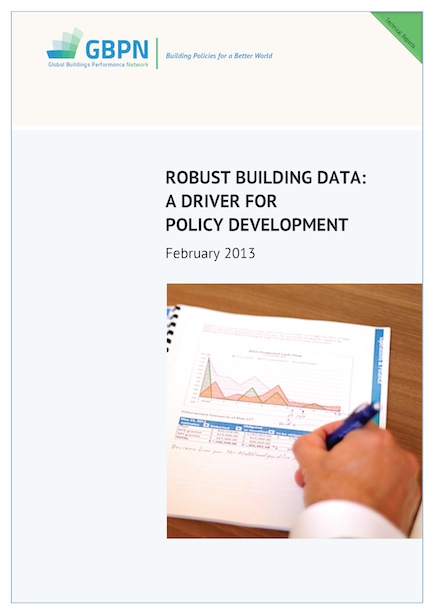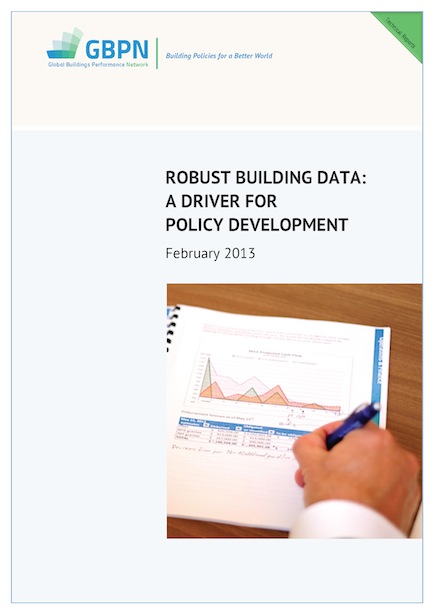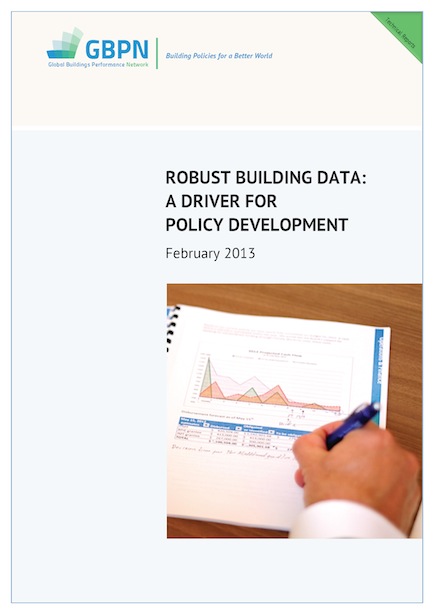印度建筑的减排潜力
 可靠证据表明,至2050年印度建筑领域会产生巨幅能源增长,基于此估测,本报告分析了印度目前建筑节能减排的政策框架及其节能潜力。
可靠证据表明,至2050年印度建筑领域会产生巨幅能源增长,基于此估测,本报告分析了印度目前建筑节能减排的政策框架及其节能潜力。
23 result(s) found
 可靠证据表明,至2050年印度建筑领域会产生巨幅能源增长,基于此估测,本报告分析了印度目前建筑节能减排的政策框架及其节能潜力。
可靠证据表明,至2050年印度建筑领域会产生巨幅能源增长,基于此估测,本报告分析了印度目前建筑节能减排的政策框架及其节能潜力。
 本报告就四个地区数据质量和数据的可利用性问题进行了分析,同时也提醒了我们需要完成多少工作才能建成一个强大而全面的建筑数据库,并提出了实现这个数据库的可行性建议。
本报告就四个地区数据质量和数据的可利用性问题进行了分析,同时也提醒了我们需要完成多少工作才能建成一个强大而全面的建筑数据库,并提出了实现这个数据库的可行性建议。
 本报告就四个地区数据质量和数据的可利用性问题进行了分析,同时也提醒了我们需要完成多少工作才能建成一个强大而全面的建筑数据库,并提出了实现这个数据库的可行性建议。
本报告就四个地区数据质量和数据的可利用性问题进行了分析,同时也提醒了我们需要完成多少工作才能建成一个强大而全面的建筑数据库,并提出了实现这个数据库的可行性建议。
 Data Annex
Data Annex
Discover where things stand regarding building energy data quality and availability in our four regions, this report reminds us of how far we have to go before a robust and comprehensive set of building data is in place and provides some recommendations of how we can get there.
 The Economist Intelligence Unit (EIU) report "Achieving scale in energy-efficient buildings in India: A view from the construction and real estate sectors" commissioned by the GBPN explains the challenges and opportunities of investing in energy efficiency in buildings in India.
The Economist Intelligence Unit (EIU) report "Achieving scale in energy-efficient buildings in India: A view from the construction and real estate sectors" commissioned by the GBPN explains the challenges and opportunities of investing in energy efficiency in buildings in India.
 A report from the Economist Intelligence Unit (EIU), commissioned by the GBPN finds that while India’s commercial building sector has blazed the energy-effiency trail in the building sector, achieving significant scale will depend on efficiency measures becoming standard practice in the commercial middle market, retrofit and, particularly, the residential building segment.
A report from the Economist Intelligence Unit (EIU), commissioned by the GBPN finds that while India’s commercial building sector has blazed the energy-effiency trail in the building sector, achieving significant scale will depend on efficiency measures becoming standard practice in the commercial middle market, retrofit and, particularly, the residential building segment.
 Executive Summary
Executive Summary
GBPN conducted a study on the factors affecting the use of ESCO models for the retrofit of existing buildings in China, identifying current barriers to the development of the Chinese ESCO market, while also researching best-practice examples of ESCOs globally and investigating the feasibility of introducing those examples to China.
There is now widespread recognition in the international community that the commitments made by national governments under the Paris Climate Agreement in 2015 cannot be achieved without concerted action by cities. Fortunately, many mayors have shown strong commitment to tackling climate change and a willingness to collaborate to achieve this goal.
It is clear that city must be part of the solution if an urbanizing world is to grapple successfully with ecological challenges such as energy depletion and climate change. A system dynamics model was developed in this study using STELLA platform to model the energy consumption and CO2 emission trends for the City of Beijing over 2005–2030. Results show that the total energy demand in Beijing is predicted to reach 114.30 million tonnes coal equivalent (Mtce) by 2030, while that value in 2005 is 55.99 Mtce, which is 1.04 times higher than the level in 2005.
This paper reviews the empirical literature that provides a correlation between the different barriers to energy efficiency and consumer behavior related to two domains. It evaluates behavior related to energy curtailment, which represents routine, repetitive effort to decrease consumption on a day-to-day basis. It also considers behavior related to investments, which are one time actions such as purchasing new energy efficiency technologies. The paper also reviews the existing literature that assesses the effect of policies on energy use and investment in energy efficiency technologies.
Energy efficiency policies have the unique capacity to contribute to a more sustainable energy future at an economic net benefit even when co-benefits are not included in the evaluations. The purpose of this paper is to present quantitative and comparative information on the societal cost-effectiveness and the lifetime energy savings of all light eight building energy efficiency policy instruments.
The Dutch Government stimulates the application of energy efficiency measures to reduce the energy requirements of buildings, which are responsible for about 20% of the Dutch CO2 emissions. For our assessment, we followed a qualitative approach, due to a lack of data. We reviewed the mix of policy instruments and used stakeholder surveys and interviews. We found that energy use is not very likely to decline fast enough to achieve the Dutch policy targets for 2020. For new buildings, the policy mix works well, but its contribution to the policy targets is limited.
This report is the first report of the ‘Energy Savings 2030’-project which seeks to help the Coalition for Energy Savings to produce a robust and timely input to the 2030 policy discussion. It brings together and summarises recent empirical evidence on costs and benefits of energy efficiency measures. The evidence gap in terms of reliable ex-post data is well known. In the majority of cases results from ex-ante modelling studies inform the debate. The research carried out for this report confirms the persistent gap in publicly available ex-post evaluations of energy efficiency programmes.
The Energy Efficiency Financial Institutions Group (“EFFIG”) identifies the need to engage multiple stakeholder groups, scale-up the use of several financial instruments within a clear and enforced “carrot and stick” legislative framework. This report identifies a number of approaches and instruments that have proven to encourage investments and multiple market barriers that stand in the way of an energy efficient Europe.
In 2009, the European Union adopted high-level goals for renewable energy, energy efficiency, and greenhouse gas reductions with targets set toward the year 2020. This was followed in 2012 by adoption of the Energy Efficiency Directive (EED) (2012/27/EU), which included as a major component a requirement for Member States to create Energy Efficiency Obligations Schemes (EEOSs) on energy companies or equivalent alternative measures, and those provisions have now been in effect for three years.
Global warming and environment problems caused by the excessive emission of greenhouse gases (GHGs), along with rapid economic development has attracted the attention of many countries and regions of the world. Reducing GHG emissions is essential to mitigate the threat of global warming. Household carbon (dioxide) emissions have been recognized as one of the most important contributors to climate change, with a significant impact on both the local and global environment, and various policy instruments have been implemented by governments to bring about the reduction.
Owing to the rapid urban growth of past decades, the refurbishment of buildings has become a central topic of city development. A key aspect of building renovations deals with energy saving, both for economic and environmental concerns. The present literature mainly focuses on technological solutions for buildings, and the related data are studied with descriptive statistics. Instead, this paper aims to evaluate the energy effectiveness of refurbishment interventions from a global sector viewpoint.